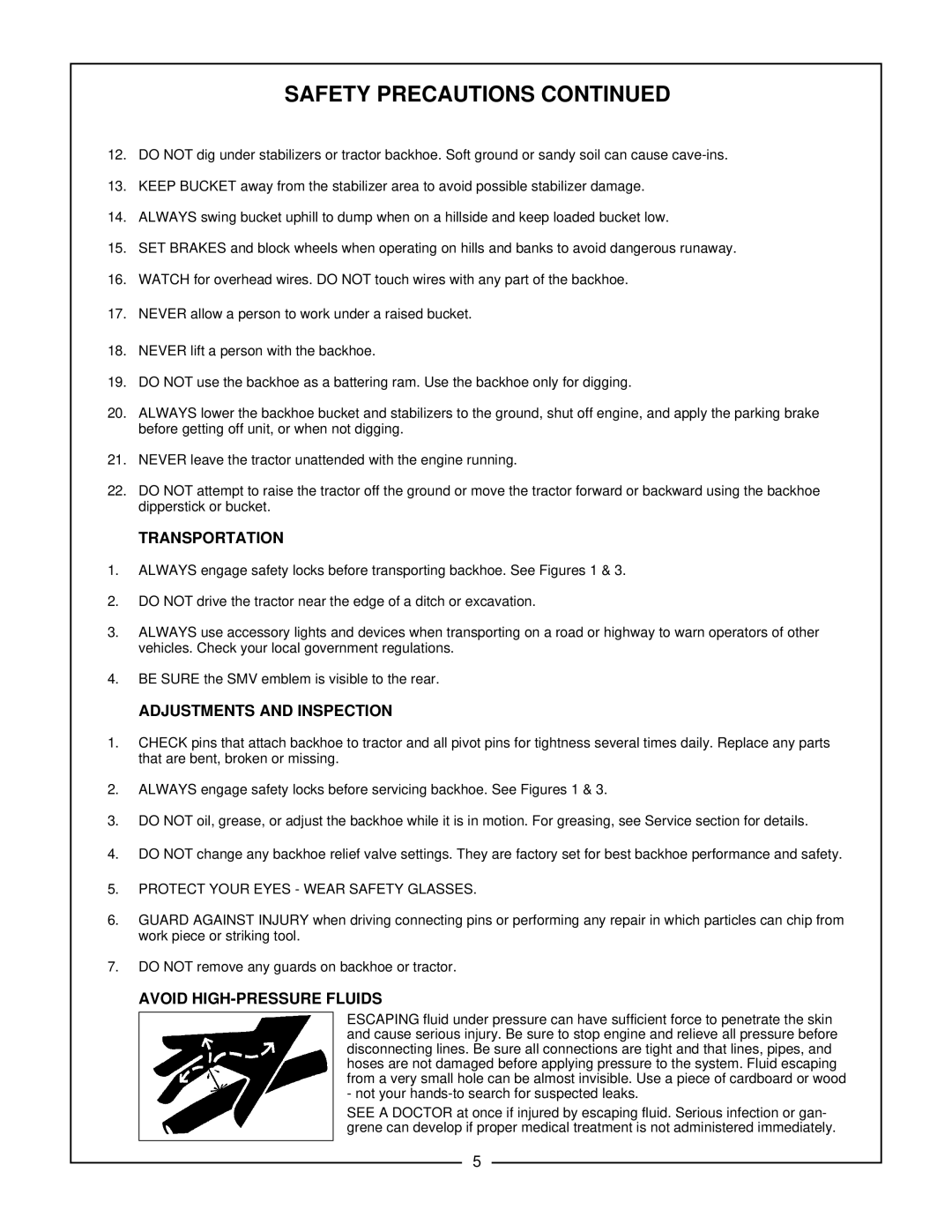
SAFETY PRECAUTIONS CONTINUED
12.DO NOT dig under stabilizers or tractor backhoe. Soft ground or sandy soil can cause
13.KEEP BUCKET away from the stabilizer area to avoid possible stabilizer damage.
14.ALWAYS swing bucket uphill to dump when on a hillside and keep loaded bucket low.
15.SET BRAKES and block wheels when operating on hills and banks to avoid dangerous runaway.
16.WATCH for overhead wires. DO NOT touch wires with any part of the backhoe.
17.NEVER allow a person to work under a raised bucket.
18.NEVER lift a person with the backhoe.
19.DO NOT use the backhoe as a battering ram. Use the backhoe only for digging.
20.ALWAYS lower the backhoe bucket and stabilizers to the ground, shut off engine, and apply the parking brake before getting off unit, or when not digging.
21.NEVER leave the tractor unattended with the engine running.
22.DO NOT attempt to raise the tractor off the ground or move the tractor forward or backward using the backhoe dipperstick or bucket.
TRANSPORTATION
1.ALWAYS engage safety locks before transporting backhoe. See Figures 1 & 3.
2.DO NOT drive the tractor near the edge of a ditch or excavation.
3.ALWAYS use accessory lights and devices when transporting on a road or highway to warn operators of other vehicles. Check your local government regulations.
4.BE SURE the SMV emblem is visible to the rear.
ADJUSTMENTS AND INSPECTION
1.CHECK pins that attach backhoe to tractor and all pivot pins for tightness several times daily. Replace any parts that are bent, broken or missing.
2.ALWAYS engage safety locks before servicing backhoe. See Figures 1 & 3.
3.DO NOT oil, grease, or adjust the backhoe while it is in motion. For greasing, see Service section for details.
4.DO NOT change any backhoe relief valve settings. They are factory set for best backhoe performance and safety.
5.PROTECT YOUR EYES - WEAR SAFETY GLASSES.
6.GUARD AGAINST INJURY when driving connecting pins or performing any repair in which particles can chip from work piece or striking tool.
7.DO NOT remove any guards on backhoe or tractor.
AVOID HIGH-PRESSURE FLUIDS
ESCAPING fluid under pressure can have sufficient force to penetrate the skin and cause serious injury. Be sure to stop engine and relieve all pressure before disconnecting lines. Be sure all connections are tight and that lines, pipes, and hoses are not damaged before applying pressure to the system. Fluid escaping from a very small hole can be almost invisible. Use a piece of cardboard or wood - not your
SEE A DOCTOR at once if injured by escaping fluid. Serious infection or gan- grene can develop if proper medical treatment is not administered immediately.
5
